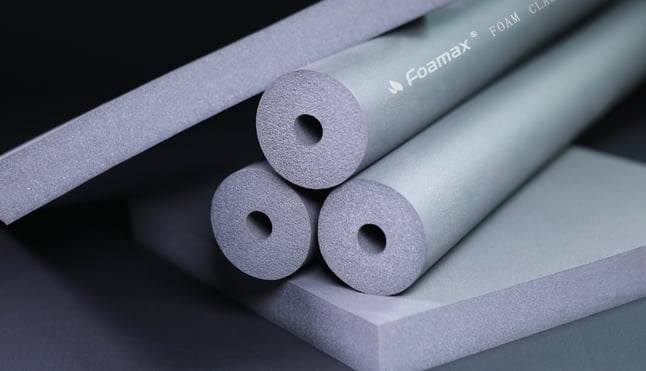
The Pros and Cons of Insulation Sheeting
1/8/20246 min read


We are witnessing a significant shift in building materials, quite literally. There is an overwhelming trend towards the increased use of synthetic and manufactured materials in construction, marking a paradigm shift in the industry. Taking the lead in this transformation are advancements in insulation sheeting.
Continue reading to delve into the advantages and disadvantages of insulation sheeting in the realm of high-performance building.

Insulation Sheeting as an Insulation Strategy
When insulation sheeting(rubber foam) is installed on residential exterior walls, the material can serve as a form of continuous insulation, providing thermal benefits to the building envelope. Rubber foam insulation is typically sold as rubber foam in a specific thickness. Similar to rigid foam insulation panels, rubber foam insulation also provides thermal protection and has the ability to prevent air and moisture penetration.
Just like rigid foam insulation panels can act as drainage planes, rubber foam insulation can perform a similar function when installed on exterior walls, replacing building cladding for improved time and cost efficiencies. To act as a drainage plane, rubber foam insulation tape and waterproofing tape need to be properly applied along the seams of the rubber foam insulation to ensure continuity of the drainage plane is provided between panels. These tapes must be durable enough to prevent moisture penetration at the panel seams for the life of the system. In addition, it is necessary to use insulating tape and sometimes waterproofing tape to integrate the top edge of the drainage plane, corresponding to the seams of the drainage plane (head waterproofing, penetration waterproofing, step waterproofing, drain waterproofing, etc.).
Inslation Sheeting and Building Codes
Insulation sheeting is also required by some codes and plans due to its thermal properties. ENERGY STAR™ requires that rubber foam or insulating sheathing be installed when the wall is metal framed (ENERGY STAR 2015). ENERGY STAR also stipulates that rubber foam sheathing or insulation with a thickness of ≥R-3 should be installed in climate zones 1 through 4, while rubber foam sheathing or insulation with a thickness of ≥R-5 should be installed in climate zones 5 through 8. Guardrail (ENERGY STAR 2015).
Continuous rubber foam insulation also provides an effective solution to thermal bridging. Thermal bridging occurs where low-R-value components, such as wood or steel, extend from the interior of a building to the exterior. In traditional building construction, although the wall cavity is filled with insulation material, there is no insulation material in the window frames, door frames, supports, top and bottom plates; these frames make up nearly a quarter of the wall area. Rubber foam insulation can be installed on the outside of the frame to create a continuous layer of insulation, reducing heat loss through thermal bridging.

When incorporating rubber foam insulation sheeting into your construction project, decisions must be made regarding its role in the building sheathing and its suitability for serving as a drainage plane. Climate considerations play a role in guiding these decisions.
Rubber foam insulation sheeting, similar to extruded polystyrene (XPS) and foil-faced polyisocyanurate (polyiso), represents a high-density rigid foam insulation that can effectively function as exterior insulation. According to Building America(SM) standards, it is generally approved for use as a drainage plane, provided the joints are properly sealed. The choice between using rubber foam insulation sheeting in addition to OSB for building sheathing or as the sole sheathing layer depends on your specific project requirements and the prevailing climate.
For insulation sheathing membranes, a reliable air barrier is crucial, and the use of tape is integral to achieving this. The tapes should be applied on a clean, dry, and warm surface to ensure optimal performance.
To leverage rubber foam insulation sheeting as a water-resistive barrier, the vertical plane of the exterior face must be as smooth and continuous as possible, following similar principles outlined for other rigid foam insulations.
Considered the lowest cost, highest performing rainwater management strategy, rubber foam insulation sheeting with sealed joints aligns with recommendations from experts like Lstiburek (2006, 2010). However, it's essential to acknowledge the construction challenge associated with sealing joints in rubber foam insulation sheeting reliably and durably to prevent water ingress. Attention to detail and quality sealing methods are paramount in addressing this challenge and ensuring the effectiveness of the rainwater management system.
Installing Insulation Sheathing
Categories
Popular
Where can I get high quality foam sheet insulation?
We have focused on the research of thermal insulation materials for forty years and have obtained many international certifications. We are mainly engaged in glass wool, thermal insulation rubber and plastic, rock wool and other products. Choose us to give you a satisfactory experience
Benefits of Insulation Sheathing
More effective insulation With R-values ranging from 3.6 to 8.0, rubber foam insulation sheeting surpasses other materials in insulation efficiency per inch (i.e., plywood with an R-value of 1.25 and fiberglass batts with an R-value of 3.14). This is particularly crucial in safeguarding framing and walls from damage, such as mold and rot, in areas with extremely cold or damp climates. As rubber foam insulation is applied externally, it effectively prevents thermal bridging—a phenomenon where heat loss occurs due to an interruption in insulation caused by a more conductive material. This commonly happens when interior insulation intersects elements like stud frames or electrical boxes.
Better at controlling moisture Rubber foam insulation sheeting plays a dual role in moisture control. It shields the wood sheathing or framing from rain or water that may leak in under the siding. Additionally, it raises the temperature of the interior sheathing or framing sufficiently to prevent moisture accumulation from the heated interior air during winter.
Better at preventing air leaks When properly sealed using appropriate techniques and adhesives, rubber foam insulation sheeting functions exceptionally well as an air barrier. Similar to its effectiveness in preventing thermal bridging, rubber foam insulation sheeting excels in both preventing infiltration (air entering the building) and stopping exfiltration (air moving out of the building). This distinguishes it from house wrap, which is proficient at preventing infiltration but less effective at curbing exfiltration."
Disadvantages of Insulation Sheeting
When incorporating rubber foam insulation sheeting into your construction project, decisions must be made regarding its role in the building sheathing and its suitability for serving as a drainage plane. Climate considerations play a role in guiding these decisions.
Rubber foam insulation sheeting, similar to extruded polystyrene (XPS) and foil-faced polyisocyanurate (polyiso), represents a high-density foam insulation that can effectively function as exterior insulation. According to Building America(SM) standards, it is generally approved for use as a drainage plane, provided the joints are properly sealed. The choice between using rubber foam insulation sheeting in addition to OSB for building sheathing or as the sole sheathing layer depends on your specific project requirements and the prevailing climate.
For insulation sheathing membranes, a reliable air barrier is crucial, and the use of rubber foam tape is integral to achieving this. The tapes should be applied on a clean, dry, and warm surface to ensure optimal performance.
To leverage rubber foam insulation sheeting as a water-resistive barrier, the vertical plane of the exterior face must be as smooth and continuous as possible, following similar principles outlined for other rigid foam insulations.
Considered the lowest cost, highest performing rainwater management strategy, rubber foam insulation sheeting with sealed joints aligns with recommendations from experts like Lstiburek (2006, 2010). However, it's essential to acknowledge the construction challenge associated with sealing joints in rubber foam insulation sheeting reliably and durably to prevent water ingress. Attention to detail and quality sealing methods are paramount in addressing this challenge and ensuring the effectiveness of the rainwater management system.
















About Us
Click the button below to get more information about us
Newsletter
Click to subscribe for more information
Follow Us
Contact Us
Address
Dacheng town, Langfang City, Hebei province, China
Phone
+86 185 03165 626
